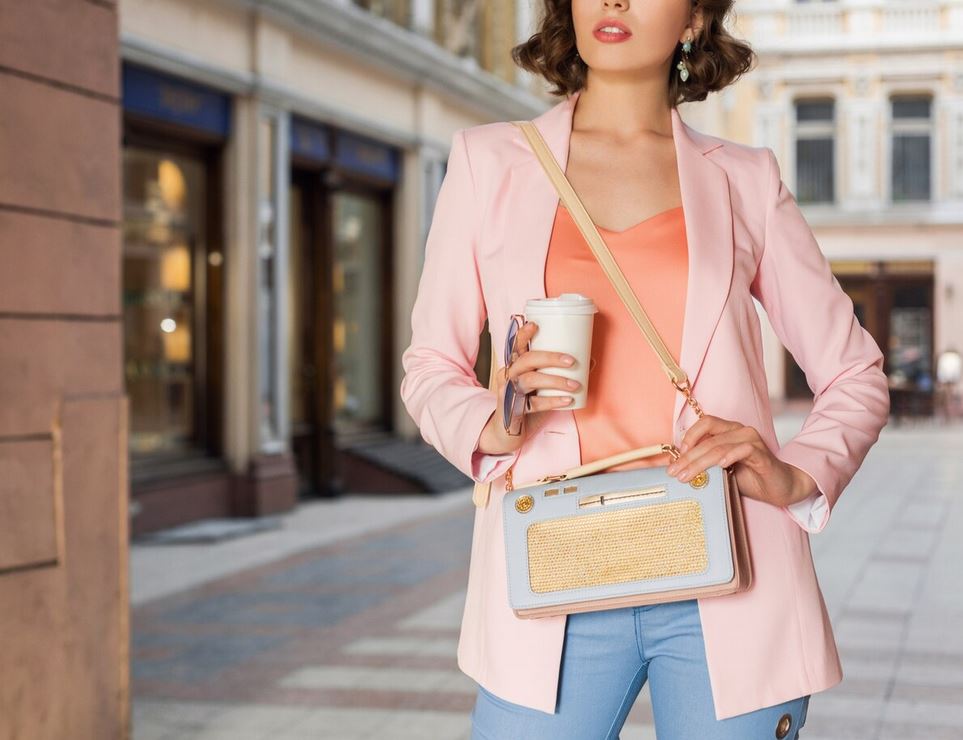
The luxury bag industry is a thriving and lucrative sector of the fashion world. Luxury bags are not just accessories; they are symbols of status, style, and craftsmanship. These bags are coveted by fashion enthusiasts and collectors alike, and they play a significant role in defining one’s personal style and making a fashion statement.
Luxury bags have a long and storied history, dating back centuries. They have evolved from simple pouches used to carry essentials to intricate and beautifully designed pieces of art. Today, luxury bags are created by renowned fashion houses and designers who pour their creativity and expertise into every detail.
The Design Process: From Sketch to Sample
Designing a luxury bag is a meticulous and intricate process that involves several steps. It all begins with a sketch, where the designer brings their vision to life on paper. This sketch serves as the blueprint for the bag’s design, shape, and structure.
Once the sketch is finalized, it is transformed into a sample. This involves creating a prototype of the bag using various materials and techniques. The sample allows the designer to see how the bag looks and feels in real life, and make any necessary adjustments before moving forward with production.
Creativity and innovation are crucial in the design process of luxury bags. Designers must constantly push boundaries and come up with fresh ideas to stand out in a highly competitive market. They must also consider practicality and functionality while maintaining the brand’s aesthetic.
Material Selection: The Importance of Quality
When it comes to luxury bags, material selection is of utmost importance. The choice of materials can greatly impact the durability, quality, and value of a bag. Luxury brands often opt for high-quality materials such as leather, exotic skins, and premium fabrics.
Factors to consider when selecting materials for luxury bags include durability, texture, colorfastness, and sustainability. The material should be able to withstand daily wear and tear while maintaining its shape and appearance. It should also feel luxurious to the touch and exude a sense of elegance.
Quality materials not only enhance the overall look and feel of a luxury bag but also contribute to its longevity. A well-made bag can last for years, becoming an investment piece that can be passed down through generations. Luxury brands understand the importance of using top-notch materials to create bags that stand the test of time.
The Art of Handcrafting: Techniques and Skills
Handcrafting is an integral part of luxury bag production. Skilled artisans meticulously craft each bag, paying attention to every detail and ensuring the highest level of craftsmanship. These artisans possess years of experience and expertise in their craft, honing their skills to perfection.
The handcrafting process involves several techniques, such as cutting, stitching, and finishing. Each step requires precision and attention to detail. For example, the cutting process involves carefully selecting the right piece of leather or fabric and cutting it with precision to ensure a perfect fit.
Stitching is another crucial aspect of handcrafting luxury bags. Skilled artisans use specialized sewing machines or hand-stitching techniques to create strong and durable seams. The stitching must be flawless, with no loose threads or unevenness.
Finishing touches, such as adding hardware, zippers, and embellishments, complete the handcrafting process. These details are meticulously applied to ensure they enhance the overall design and functionality of the bag.
Production: Assembly Line or Artisanal?
When it comes to luxury bag production, there are two main methods: assembly line production and artisanal production.
Assembly line production involves a more mechanized and streamlined approach. Bags are produced in large quantities using machines and standardized processes. This method allows for faster production and lower costs but may sacrifice some of the craftsmanship and attention to detail found in artisanal production.
Artisanal production, on the other hand, focuses on handcrafting each bag individually. Skilled artisans meticulously create each bag, ensuring the highest level of craftsmanship and attention to detail. This method allows for more customization and flexibility but may result in higher production costs and longer lead times.
Both methods have their pros and cons, and luxury brands often choose the one that aligns with their brand identity and production capabilities. Some brands may opt for a combination of both methods, using assembly line production for certain styles and artisanal production for more intricate and exclusive designs.
Quality Control: Ensuring Perfection
Quality control is a crucial aspect of luxury bag production. Luxury brands strive to deliver products that meet the highest standards of quality and craftsmanship. Each bag goes through a rigorous quality control process to ensure it is flawless before it reaches the hands of consumers.
The quality control process involves several steps, including thorough inspections at various stages of production. Skilled inspectors examine each bag for any defects, such as stitching errors, loose threads, or imperfections in the materials. They also check for proper alignment, symmetry, and overall appearance.
If any issues are found during the quality control process, the bag is either repaired or discarded. Luxury brands understand that even the smallest flaw can greatly impact the perceived value and desirability of a bag. Therefore, they take great care in ensuring that each bag meets their high standards before it is released to the market.
Brand Identity: The Role of Logo and Branding
Branding plays a significant role in the luxury bag industry. A strong brand identity helps luxury brands stand out in a crowded market and creates a sense of exclusivity and desirability among consumers.
The logo is one of the most recognizable elements of a luxury brand’s identity. It serves as a symbol of prestige and craftsmanship. Luxury brands carefully design their logos to reflect their brand values and aesthetic. The logo is often prominently displayed on the bag, acting as a statement of authenticity and quality.
In addition to the logo, luxury brands use various branding elements to create a cohesive and recognizable identity. These elements include the choice of materials, color palettes, hardware, and overall design aesthetic. Luxury brands strive to create a unique and distinctive brand identity that resonates with their target audience.
Marketing Strategies: Creating Demand for Luxury Bags
Creating demand for luxury bags requires effective marketing strategies. Luxury brands employ various tactics to generate interest and desire among consumers.
One common marketing strategy used by luxury bag companies is exclusivity. Limited edition releases, collaborations with renowned designers or artists, and invitation-only events create a sense of exclusivity and scarcity. This drives up demand and creates a sense of urgency among consumers.
Another effective marketing strategy is storytelling. Luxury brands often tell compelling stories about their heritage, craftsmanship, and brand values. These stories create an emotional connection with consumers and help them understand the unique qualities and value of the brand.
Social media and influencer marketing have also become powerful tools in promoting luxury bags. Luxury brands collaborate with influencers and celebrities to showcase their bags to a wider audience. The endorsement of a well-known personality can greatly influence consumer behavior and drive sales.
Celebrity Endorsements: The Power of Influencers
Celebrity endorsements have long been a staple in the luxury bag industry. When a celebrity is seen carrying a particular bag, it instantly becomes desirable and sought after by consumers.
Celebrities are often seen as style icons and trendsetters, so their endorsement can greatly impact consumer behavior. Luxury brands understand the power of celebrity endorsements and often collaborate with celebrities to promote their bags.
In recent years, social media influencers have also become influential in promoting luxury bags. These influencers have large followings on platforms like Instagram and YouTube, and their recommendations can greatly influence consumer purchasing decisions.
Luxury brands carefully select celebrities and influencers who align with their brand values and target audience. They often provide these individuals with free bags or pay them to promote their products. The result is increased brand visibility and desirability among consumers.
Future of Luxury Bags: Trends and Innovations
The luxury bag industry is constantly evolving, with new trends and innovations shaping its future. One of the current trends in luxury bag design is sustainability. Consumers are becoming more conscious of the environmental impact of their purchases, and luxury brands are responding by using sustainable materials and production methods.
Another trend is customization. Luxury brands are offering more options for consumers to personalize their bags, such as choosing different colors, materials, and hardware. This allows consumers to create a bag that reflects their individual style and preferences.
In terms of innovations, technology is playing a significant role in the future of luxury bags. Smart bags with built-in features like wireless charging, GPS tracking, and biometric locks are becoming more popular. These innovations combine functionality with luxury, catering to the needs of tech-savvy consumers.
Luxury bags hold a special place in the world of fashion and culture. They are not just accessories; they are symbols of status, style, and craftsmanship. The design process, material selection, handcrafting techniques, and production methods all contribute to the creation of these coveted pieces.
Luxury brands understand the importance of quality control, branding, marketing strategies, and celebrity endorsements in creating demand for their bags. They constantly innovate and adapt to changing consumer preferences and market trends.
As we look to the future, sustainability, customization, and technological advancements will continue to shape the luxury bag industry. Luxury bags will remain timeless pieces that define personal style and make a fashion statement for years to come.
If you’re fascinated by the world of luxury bags and want to delve deeper into their creation process, you won’t want to miss this related article: “The Art of Craftsmanship: Unveiling the Secrets Behind Luxury Bag Production.” This insightful piece takes you behind the scenes of renowned luxury bag brands, offering exclusive access to the meticulous craftsmanship and attention to detail that goes into creating these coveted accessories. Discover the passion and skill that bring these bags to life by clicking here.


